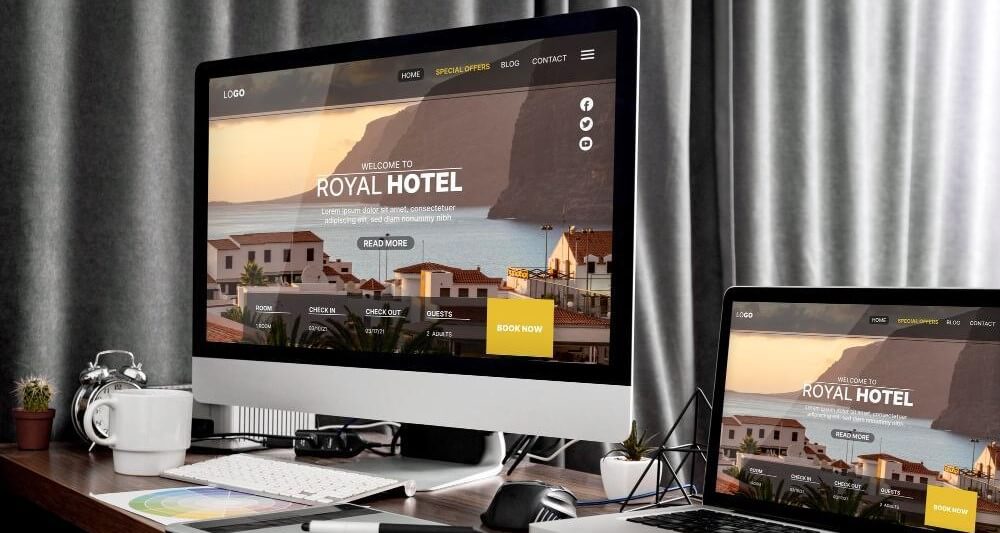How to Choose the Right Font for Your Website?

Typography in website design plays two main roles. It promotes legibility and communicates the tone of the message. Typography also enhances design aesthetics and emotions. Consider these roles when choosing fonts for a website. The right font choices change the feel and look of your website.
It makes the primary message you want to spread stand out. Use web design fonts that make your pages visually appealing. Use contrasting styles to make your statement stronger. They not only boost website usability but also readability. The font colors, sizes, and styles you use matter. They determine the compatibility of your website with different browsers and devices.

![]()
How to choose a font for a website
How to choose a font in website design is a critical issue. It affects the overall appeal and design of your site. Perfectly selected fonts improve user experience. Choices are based on style, size, contrast, performance, and compatibility.
Creating websites collaboratively improves delivery speed and overall appearance. Teams share ideas, information, and tasks. It is easier to detect, share, and correct errors. The screenshot on Mac is a useful strategy for sharing ideas. They enhance accountability and help with correct resource allocation. The Mac snipping tool lets you take different screenshot sizes. Try out different ways on how to screenshot on a MacBook to capture the best screenshots. The easiest way to screenshot is to use the keyboard shortcut Shift + Command + 5. Use the different tools to screenshot and share your screens.
The message and text size
People design websites for different purposes. Your goal could be blogging, online storefronts, or marketing. Each design meets specific goals and the message is communicated differently. The style of a baby products website differs from an app development page. Understand how to find a font on a website for different needs.
The style and size of the typeface determine how audiences will view the message. If your page will have more text, you might want to use regular weight typefaces. Fewer texts may do well with larger and bolder styles. Use website font size guidelines to choose the right style and size.
Be mindful of readability and legibility
The best font for a website should be readable and legible. Ensure its readability and legibility pass the benchmark. People will consume your messages more when your page meets this benchmark. Readability promotes easier text understanding.
Legibility promotes text clarity ensuring each character is perfectly noticeable. Too fancy fonts might look unfriendly on a page. Typefaces like Roboto, Libre Franklin, and Raleway are good for design.
Pairing and contrast
Your site will be attractive if you pair two or more contrasting fonts. It is okay to pair fonts in the same family. The primary rule is to ensure they are contrasting. For instance, a Sans Serif Bold can be paired with a Serif Normal typeface.
Contrasting relies on the belief that opposing sides attract. Since the opposites attract, it promotes readability. They create a harmony that makes the text legible. A font comparison tool can help you make these choices better.
Performance versus looks
Looks and performance are good but performance outweighs looks. Visitors will ignore any page that is slow to open. They consider speed first before considering attraction. You cannot ignore one and embrace the other more. Visit the best website for fonts to select fonts that contrast perfectly. Here are important things to consider.
‣ The balance between speed and attraction.
‣ Select the right typeface
‣ Be mindful of its boldness. Bolder fonts tend to be heavier.
‣ Be mindful of its weight. Overly heavy fonts affect speed and productivity.

![]()
Font compatibility
Compatibility considers spacing, pitch, and operating systems. Your website should open in different operating systems. It should open on laptops, desktops, and mobile phones. Some typefaces are not compatible with some gadgets and operating systems. They might not work with some browsers.
This can cause frustration in users and they might abandon your website. The style should not change when you open a site in a different browser or gadget. It should retain the design and attractiveness across the board. Web fonts can be a perfect choice when considering compatibility.
Colors and contrast
Font colors matter when creating an aesthetically pleasing website. Your first consideration should be your logo and brand colors. They should match your brand color. This does not mean they must be the same color as your logo.
Choose a color scheme that contrasts your primary colors. A good contrast ensures the texts are legible and readable. If your background is light, use dark text. If it is dark, use light text.
Font sizes and testing
The font size you choose affects readability. Tinier fonts strain the reader’s eyes and will look unattractive. Balance the size to avoid too large fonts. They will look poorly done and visually unappealing. The recommended size for a website is 16 px to 18 px.
Before launching your site, test the fonts for readability and legibility. Open the unpublished site on different gadgets and browsers. Share with people to get sincere feedback from them. Make the necessary changes and test again until you get the perfect texts.
![]()
Conclusion
It is crucial to choose the right fonts for an attractive website. Choose fonts that look attractive and easy to read. They should work on different browsers, operating systems, and devices. Consider the typeface color, size, and style. Let them enhance the speed of your website instead of making it slow. Pair the colors, type, and sizes well ensuring they are contrasting.
